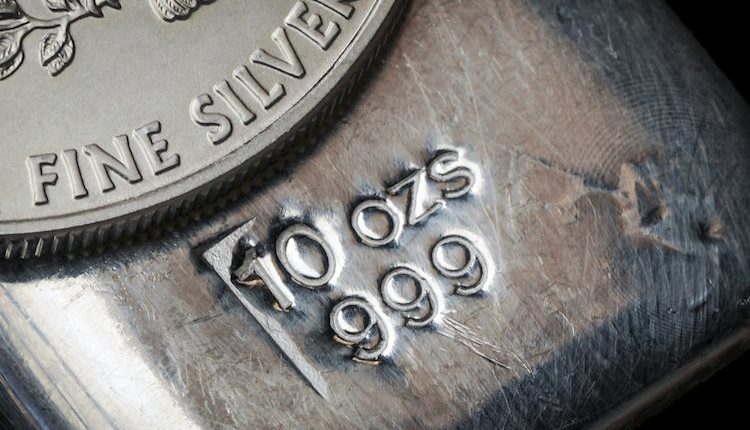- Silver price recovers from 31.60 after the US CPI data release, which showed that price pressures remained sticky in November.
- An expected growth in the US CPI has boosted Fed dovish bets for the policy meeting next week.
- Investors await China’s two-day annual economic work conference to get cues about economy’s growth prospects.
Silver price (XAG/USD) finds buying interest near the intraday low of $31.60 in Wednesday’s North American session after the release of the United States (US) Consumer Price Index (CPI) data for November. The US CPI report showed that price pressures grew in line with estimates, which encouraged traders to accelerate dovish Federal Reserve (Fed) bets for the policy meeting on December 18.
Annual headline CPI rose by 2.7%, as expected, faster than the October reading of 2.6%. The core CPI – which excludes volatile foods and energy prices – grew in line with estimates and the prior release of 3.3%. Month-on-month headline and core CPI rose expectedly by 0.3%.
The probability for the Fed to reduce interest rates by 25 basis points (bps) to 4.25%-4.50% has increased to more than 96% from 89% on Tuesday after the release of the US inflation data. A scenario that is favorable for non-yielding assets, such as Silver, as it will reduce their opportunity costs.
The US Dollar Index (DXY), which tracks the Greenback’s value against six major currencies, shows whipsaw moves after the data release. 10-year US Treasury yields drop to near 4.21%.
Going forward, investors will focus on the outcome of China’s two-day closed-door annual economic work conference, a meeting in which Politburo will discuss over likely stimulus package to revive domestic consumption and stability the realty sector.
Silver, as a metal, has applications in various industries, and higher economic stimulus will boost its demand.
Silver technical analysis
Silver price consolidates around $31.50. The white metal rallied at the start of the week to near $32.30 after breaking above the three-day resistance of $31.30. The asset climbs above the 20-day Exponential Moving Average (EMA) near $31.20, suggesting that the near-term trend has turned bullish.
The 14-day Relative Strength Index (RSI) approaches 60.00. A bullish momentum would trigger a decisive break above the same.
Looking down, the upward-sloping trendline around $29.50, which is plotted from the February 29 low of $22.30 on a daily timeframe, would act as key support for the Silver price. On the upside, the horizontal resistance plotted from the May 21 high of $32.50 would be the barrier.
Silver daily chart
Silver FAQs
Silver is a precious metal highly traded among investors. It has been historically used as a store of value and a medium of exchange. Although less popular than Gold, traders may turn to Silver to diversify their investment portfolio, for its intrinsic value or as a potential hedge during high-inflation periods. Investors can buy physical Silver, in coins or in bars, or trade it through vehicles such as Exchange Traded Funds, which track its price on international markets.
Silver prices can move due to a wide range of factors. Geopolitical instability or fears of a deep recession can make Silver price escalate due to its safe-haven status, although to a lesser extent than Gold’s. As a yieldless asset, Silver tends to rise with lower interest rates. Its moves also depend on how the US Dollar (USD) behaves as the asset is priced in dollars (XAG/USD). A strong Dollar tends to keep the price of Silver at bay, whereas a weaker Dollar is likely to propel prices up. Other factors such as investment demand, mining supply – Silver is much more abundant than Gold – and recycling rates can also affect prices.
Silver is widely used in industry, particularly in sectors such as electronics or solar energy, as it has one of the highest electric conductivity of all metals – more than Copper and Gold. A surge in demand can increase prices, while a decline tends to lower them. Dynamics in the US, Chinese and Indian economies can also contribute to price swings: for the US and particularly China, their big industrial sectors use Silver in various processes; in India, consumers’ demand for the precious metal for jewellery also plays a key role in setting prices.
Silver prices tend to follow Gold’s moves. When Gold prices rise, Silver typically follows suit, as their status as safe-haven assets is similar. The Gold/Silver ratio, which shows the number of ounces of Silver needed to equal the value of one ounce of Gold, may help to determine the relative valuation between both metals. Some investors may consider a high ratio as an indicator that Silver is undervalued, or Gold is overvalued. On the contrary, a low ratio might suggest that Gold is undervalued relative to Silver.
Read the full article here

